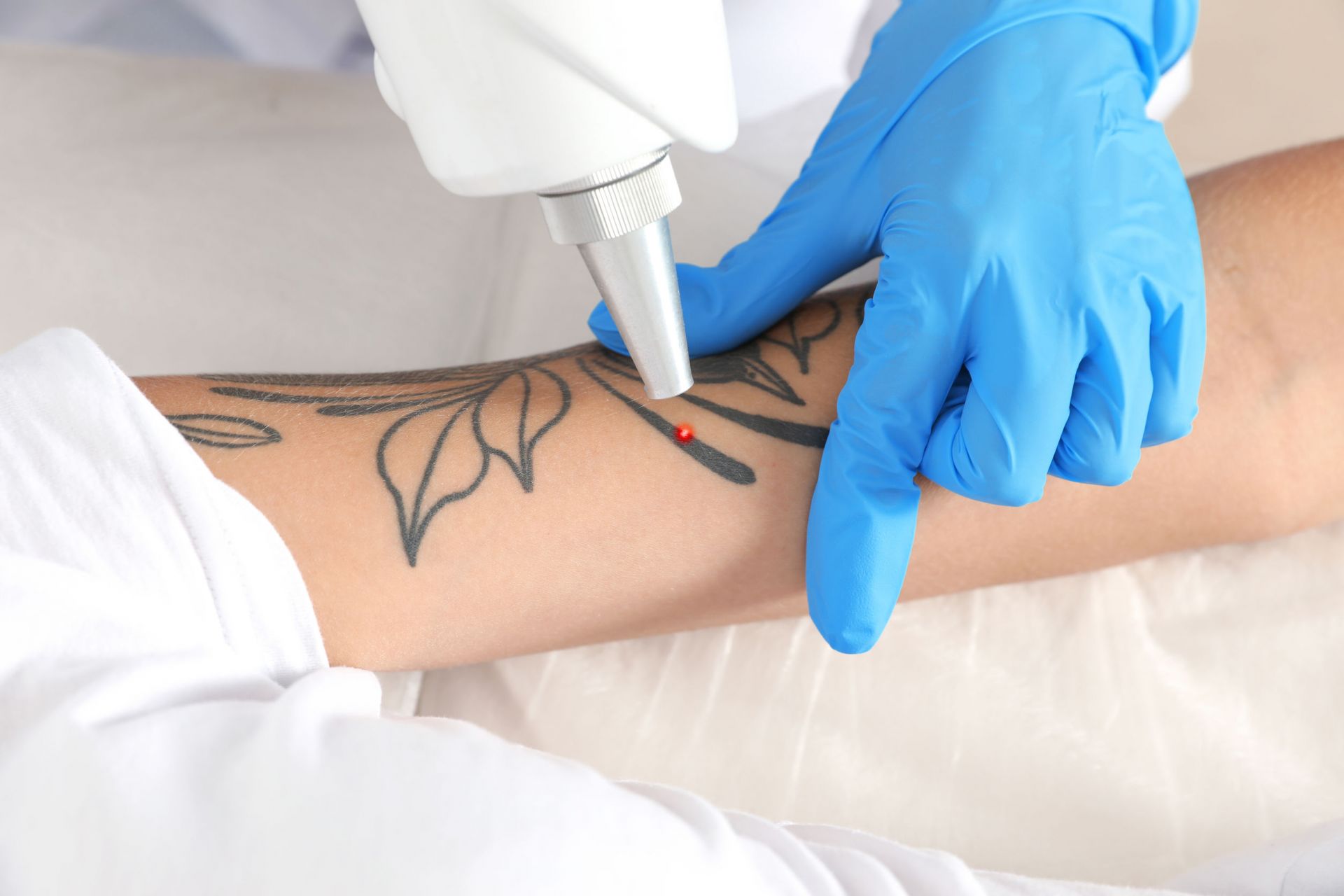Laser tattoo removal is a popular procedure for individuals who want to erase unwanted ink from their skin. The advanced technology behind laser treatments makes it possible to remove tattoos with minimal damage to the surrounding skin. However, like any medical or cosmetic procedure, Laser Tattoo Removal in Dubai carries potential risks and complications. Understanding these risks can help you make an informed decision before undergoing treatment.
Understanding Laser Tattoo Removal
Laser tattoo removal involves using high-intensity laser beams to break down the tattoo ink into tiny particles. These particles are then gradually removed by the body’s immune system. The process requires multiple sessions, depending on the tattoo’s size, color, and depth. While the treatment is generally considered safe, several complications can arise during or after the procedure.

Common Risks and Side Effects
Laser tattoo removal is not without risks. Some common side effects include:
Skin Discoloration
One of the most common issues associated with laser tattoo removal is skin discoloration. The laser targets the pigment in the tattoo ink, but it can also affect the skin’s natural melanin. This can lead to either hyperpigmentation (dark spots) or hypopigmentation (light spots).
Scarring
Scarring can occur if the skin does not heal properly after laser treatment. Factors such as improper aftercare, aggressive laser settings, or pre-existing skin conditions can increase the likelihood of permanent scars.
Infection
Since laser treatment creates micro-injuries in the skin, there is a risk of infection if the treated area is not kept clean. Bacterial infections can lead to complications such as pus formation, prolonged healing, and scarring.
Blistering and Crusting
Laser treatment can cause temporary blisters, crusting, and scabbing. These side effects are usually part of the healing process but can be uncomfortable and increase the risk of scarring if picked or scratched.
Common Risks and Their Causes
| Risk | Cause |
| Hyperpigmentation | Overproduction of melanin in response to laser exposure |
| Hypopigmentation | Destruction of melanin leads to lightened skin patches |
| Scarring | Improper aftercare, aggressive treatment settings |
| Infection | Bacterial contamination due to improper wound care |
| Blistering | Skin’s reaction to laser heat and energy |
Rare but Serious Complications
While most side effects are temporary, some complications can be more severe and long-lasting.
Allergic Reactions
Some individuals may experience allergic reactions to the tattoo ink as it is broken down. This can result in rashes, itching, and swelling.
Changes in Skin Texture
In some cases, laser tattoo removal can alter the skin’s texture, making it appear rough, bumpy, or uneven.
Persistent Pain and Sensitivity
Some individuals report prolonged pain and sensitivity in the treated area. This can make it uncomfortable to undergo additional sessions.
Ink Darkening
Certain ink colors, particularly white, red, and some shades of blue and green, can darken instead of fading. This reaction occurs due to the chemical composition of the ink.
Rare Complications and Possible Causes
| Complication | Cause |
| Allergic Reactions |
Breakdown of ink particles triggering an immune response
|
| Texture Changes | Excessive heat or improper healing |
| Persistent Pain | Nerve irritation or skin sensitivity |
| Ink Darkening | Chemical reactions in specific ink pigments |
Factors That Increase Risk
Several factors can increase the chances of complications with laser tattoo removal.
Skin Type
Darker skin tones are more prone to pigmentation changes due to the high melanin content.
Tattoo Age and Ink Type
Older tattoos are easier to remove, while newer tattoos may require more sessions and carry a higher risk of complications.
Improper Aftercare
Failing to follow post-treatment care instructions can lead to infections, scarring, and prolonged healing.
How to Minimize Risks
To reduce the chances of complications, consider the following precautions:
- Choose a Qualified Professional: Ensure that your provider is experienced in laser tattoo removal.
- Follow Aftercare Instructions: Keep the treated area clean and avoid excessive sun exposure.
- Space Out Sessions: Allow adequate time between treatments to let the skin heal.
- Use Proper Skincare Products: Applying recommended ointments can aid in faster recovery.
Frequently Asked Questions
Is laser tattoo removal painful?
Most people experience some discomfort, often described as a snapping sensation. The use of numbing creams can help reduce pain.
How long does it take for the skin to heal?
Healing time varies from person to person but typically takes two to three weeks.
Can laser tattoo removal completely erase my tattoo?
While most tattoos fade significantly, some may leave a faint shadow or residual pigment.
Is laser tattoo removal safe for all skin types?
It is generally safe for most skin types, but darker skin tones may be more prone to pigmentation issues.
What should I avoid after laser tattoo removal?
Avoid sun exposure, scratching, and harsh skincare products until the skin has fully healed.
Conclusion
While laser tattoo removal in Dubai offers an effective way to erase unwanted ink, it is essential to be aware of potential complications. Understanding the risks, following proper aftercare, and choosing an experienced provider can help minimize adverse effects. If you are considering tattoo removal, consult a professional to assess your suitability for the procedure and ensure a safe experience.

